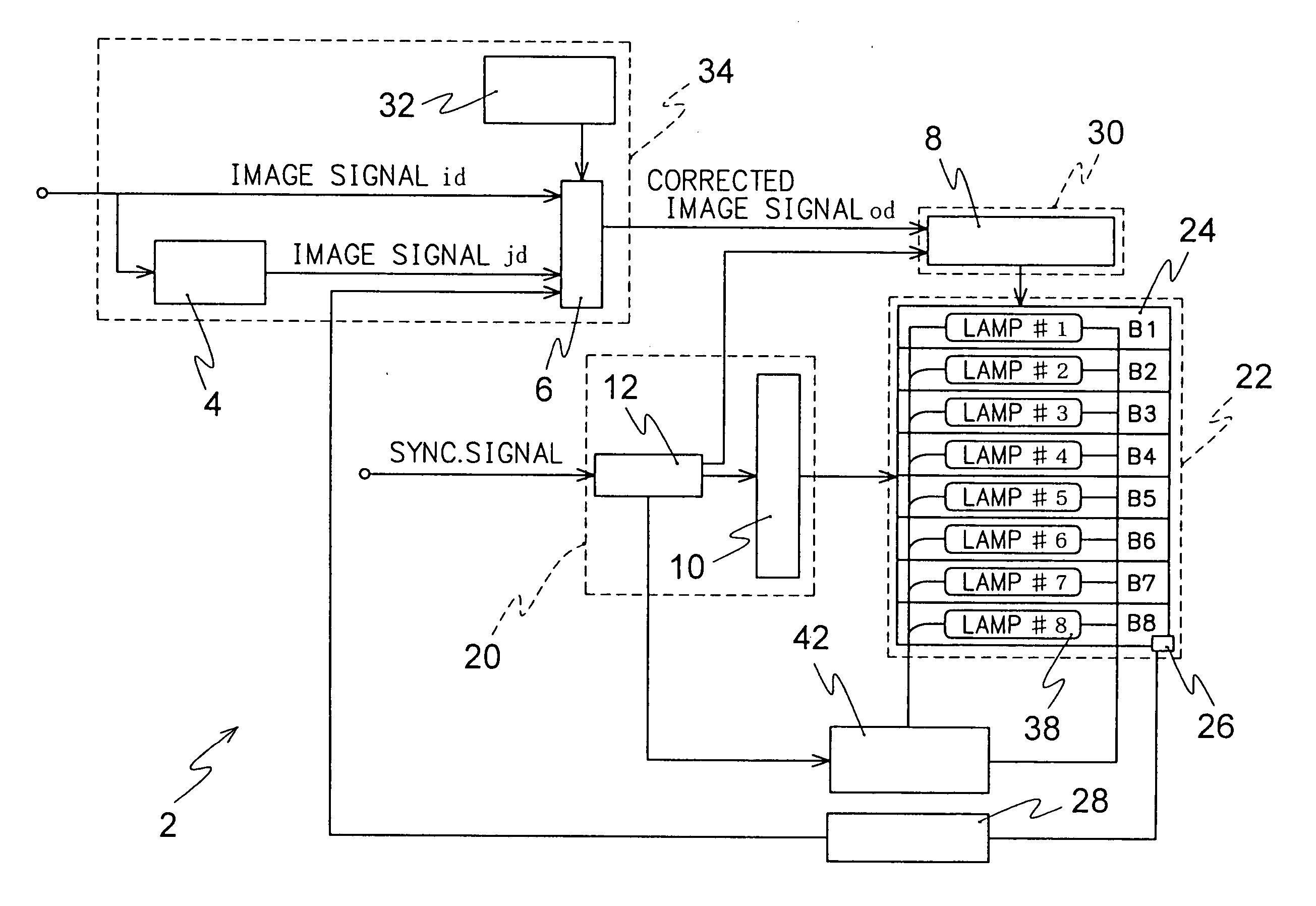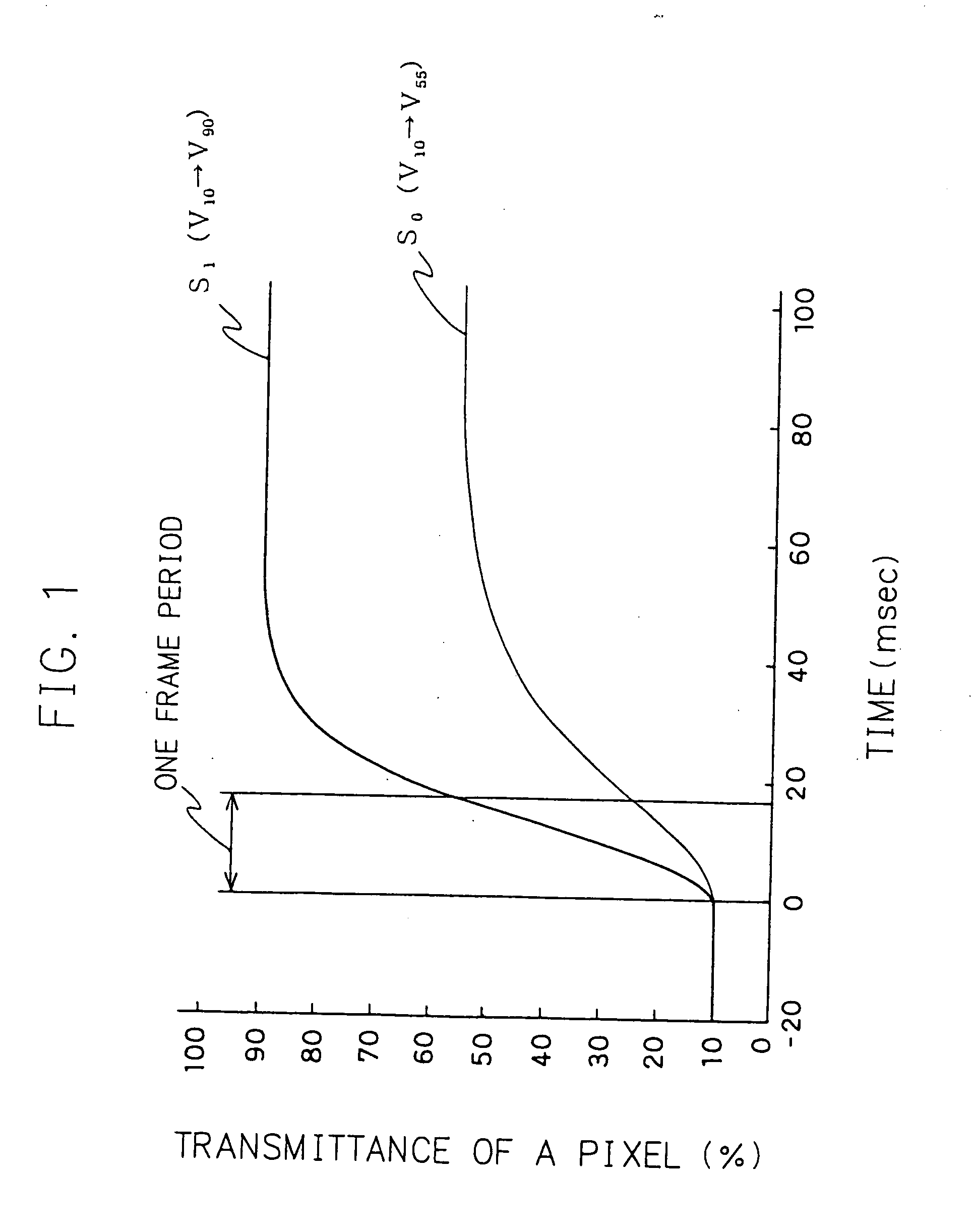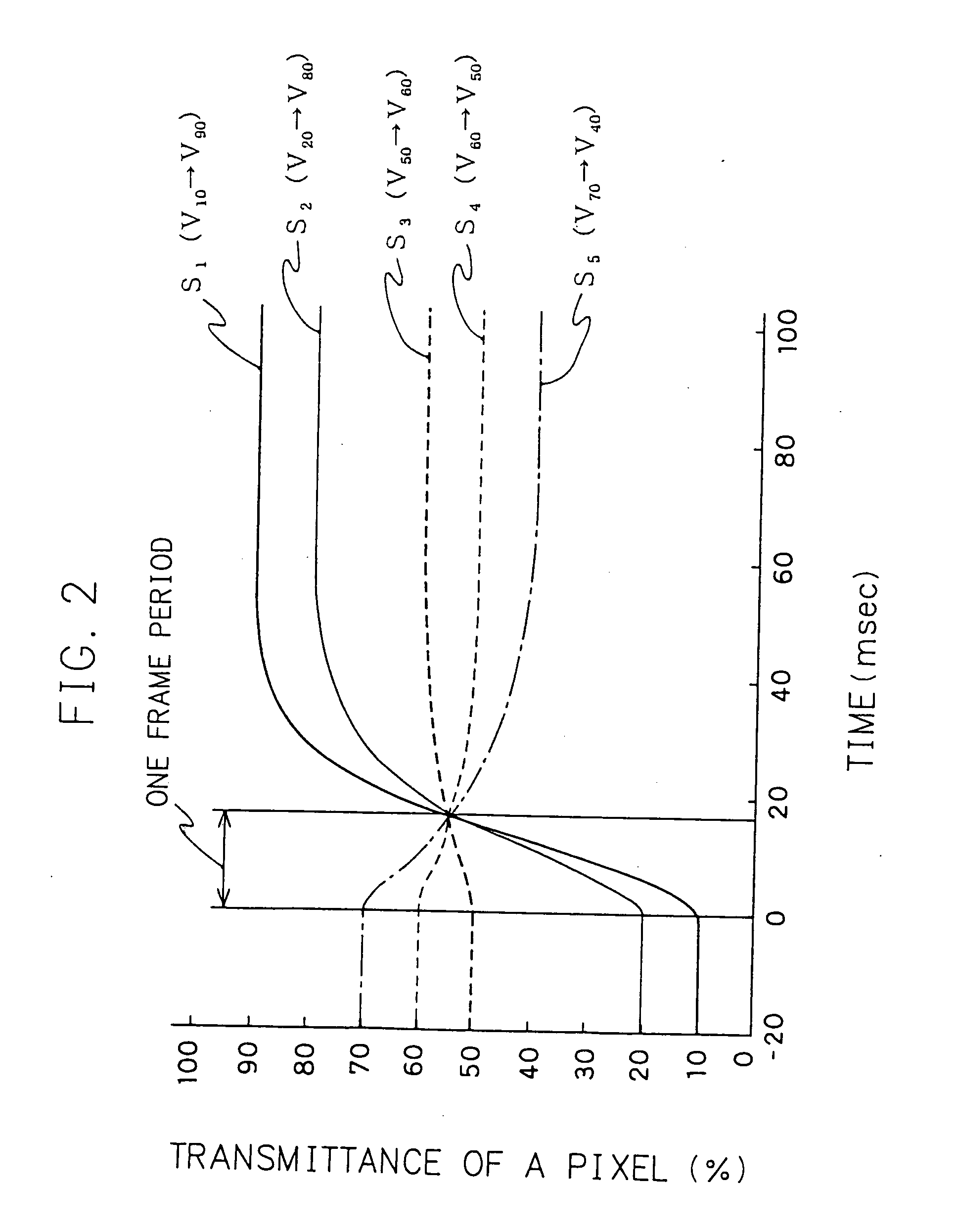Liquid crystal display device
a liquid crystal display and display device technology, applied in the field of liquid crystal display devices, can solve the problems of low display image quality with respect to the moving picture, long response time of the liquid crystal with respect to the signal, and relatively long time required until the liquid crystal attains a completely white state, etc., to achieve favorable display quality of the moving picture and eliminate the ghost
- Summary
- Abstract
- Description
- Claims
- Application Information
AI Technical Summary
Benefits of technology
Problems solved by technology
Method used
Image
Examples
embodiment 1
[0152] As has been already described, in the case where for example, a desired light transmittance is 55% in the conventional liquid crystal display device, namely in the case where the an image signal is input which designates a display having a light transmittance of 55%, a voltage V55 is applied to the liquid crystal, the voltage providing a light transmittance of 55% in the state in which a definite time passes away, and a response of the liquid crystal is almost completed. As a consequence, as shown by a thin line S0 in FIG. 1, the transmittance of the liquid crystal does not reach 55% in one frame which causes deterioration in the image quality of the moving picture display.
[0153] Therefore, according to the present embodiment, a voltage at which the liquid crystal comes to have a desired transmittance after one frame period is applied to the liquid crystal in the current frame. For example, as shown with a solid line S1 in FIG. 1, in the case where the desired transmittance ...
embodiment 2
[0155]FIG. 2 is a view showing an applied voltage and a change in a transmittance of a liquid crystal in a current frame.
[0156] It can be seen that a display having a transmittance of 55% can be obtained by applying a voltage V80 at which the transmittance becomes 80% in the state of an approximate completion of the response of the liquid crystal in the current frame in the case where the transmittance of the former frame is 20% as shown with a thin line S2 of FIG. 2. In a similar manner, as apparent from the curved lines S1, S3, S4 and S5, in the case where it can be seen that a desired transmittance of 55% can be obtained after one frame period by applying voltages V90, V60, V50 and V40 respectively in the case where the transmittances of the former frame is 10%, 50%, 60% and 70% respectively.
[0157] In this manner, the voltage at which a desired transmittance is provided after one frame period can be defined uniformly from the transmittance of the former frame. Consequently, the...
embodiment 3
[0160]FIG. 4 is a view showing a structure of a liquid crystal display device according to Embodiment 3.
[0161] As shown in FIG. 4, the liquid crystal display device 2 according to Embodiment 3 comprises an image signal processing circuit 34, a vertical driving circuit 20, a horizontal driving circuit 30 and a display panel 22. A display are 24 is formed in a display panel 22. The display area 24 is illuminated from the rear side with a backlight. In the display area 24 of the display panel 22, the pixels are arranged in a matrix-like rows and columns configuration and a switching device such as a thin film transistor (hereinafter referred to as a TFT) is connected to each of the pixels. Incidentally, in FIG. 4, the pixel and the TFT are omitted. The vertical driving circuit 20 comprises a gate driver 10 connected to the gate electrode of the TFT via the gate wiring, and a control circuit 12 for sending a timing signal to the gate driver 10. Whole display area is scanned while drivi...
PUM
 Login to View More
Login to View More Abstract
Description
Claims
Application Information
 Login to View More
Login to View More - R&D
- Intellectual Property
- Life Sciences
- Materials
- Tech Scout
- Unparalleled Data Quality
- Higher Quality Content
- 60% Fewer Hallucinations
Browse by: Latest US Patents, China's latest patents, Technical Efficacy Thesaurus, Application Domain, Technology Topic, Popular Technical Reports.
© 2025 PatSnap. All rights reserved.Legal|Privacy policy|Modern Slavery Act Transparency Statement|Sitemap|About US| Contact US: help@patsnap.com



